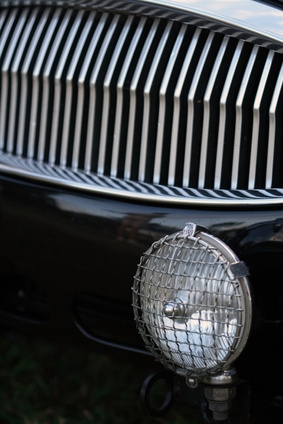
Thirty years ago, most automotive radiators were made of a copper and brass combination, which cooled the engine more efficiently than aluminum but was also more costly and heavier. These brass/copper combination radiators also contained lead solder. Lighter, more environmentally-friendly, longer lasting and cheaper aluminum radiators now dominate the radiator market even though a new, lighter brass/copper combination radiator is now available. Aluminum radiators can be damaged from internal corrosion, road debris, freezing and vibration that cause cracks in the seams and hose fittings.
Spray the radiator's surface with water or air to remove any road debris and/or bugs that may be blocking the airflow of the radiator. Spray the water or air on the rear of the radiator to remove potential blockages from the front, which is where the road debris and/or bugs come in from the outside and get stuck to the surface of the radiator.
Inspect the radiator and attached hoses as well as the seams of the radiator for any leaks. Radiator repair should be targeted to the actual leakage as opposed to blindly employing a standard fix. For example, a malfunctioning water pump can cause coolant to leak, which does not mean the radiator is leaking. And radiator leak inhibitors will not work on a malfunctioning water pump. Check the radiator cap for leaks by first removing it and inspecting the rubber seal for cracks and/or tears. Replace the cap on the radiator and use a pressure testing kit or run the engine, visually checking for any potential leaks around the cap.
Remove the radiator cap and pour radiator anti-leak solution into the radiator to repair any leaks in the radiator itself. Some leaks are caused by internal corrosion, freezing and/or vibrations and can be sealed with liquid, powder or a sealant in pellet form purchased from any auto supply store. This sealant can also repair gasket leaks by combining with the radiator's coolant, going into the leaks and swelling to block the leaks.
Repair any physical damage to the radiator, such as cracks in the structure or small holes that can allow coolant to seep out and cause the engine to overheat. Small cracks or holes can be sealed with an epoxy glue. Any broken pieces of the radiator can be soldered back into place.